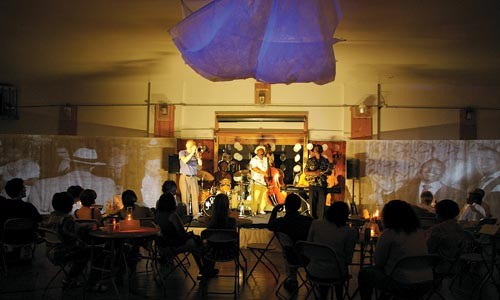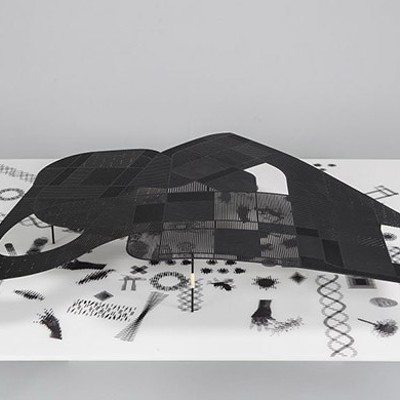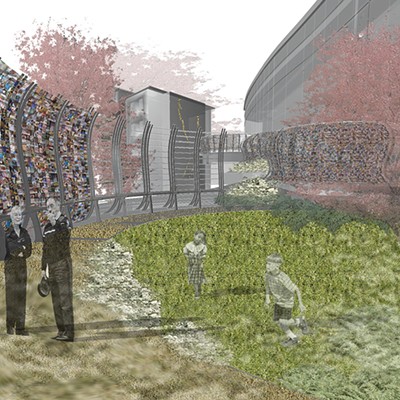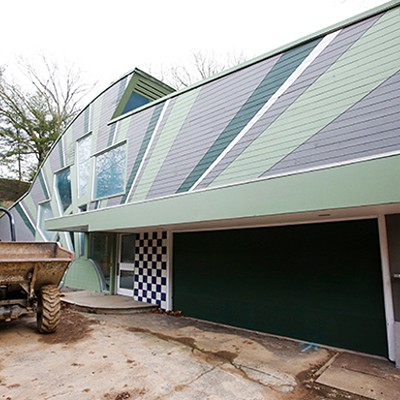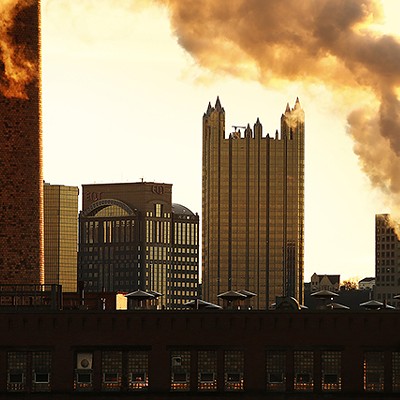Along Wylie Avenue in the Hill, the Lou Mason Jr. Apartments by Rothschild Doyno Architects have the names of jazz greats inscribed in cast stone above the first-floor windows. It's a welcome permanent reminder that, at its height, the neighborhood jazz scene welcomed artists from and contributed talent to the national circuit. Here architecture memorializes culture, and justifiably so. But design can also play a role in resuscitating that culture, even when traditional architectural qualities of permanence and solidity are not part of the undertaking.
"Jazz -- Live at the Hurricane" is a series of performances at the Blakey Program Center of the Hill House, on Wylie Avenue, with developers McCormack Baron Salazar and the Sprout Fund as collaborating sponsors. The enterprise recalls the original Hurricane Club, a long-lost venue "where Pittsburghers, both black and white, gathered, danced, drank and bopped side by side," according to Hill House CEO Evan S. Frazier. With the original bricks and mortar gone, some imaginative uses of image and material were necessary to recall the old scene and recreate it in a new light in the Blakey Center's upstairs gym, through an installation by designer Spike Wolff.
"People who might not necessarily come to the Hill would come for the music," says program coordinator Terry Baltimore. But how could you combine the memory of the neighborhood's illustrious history as a jazz district with a sequence of new performances? Making some use of the Teenie Harris collection of photographs "seemed like a natural fit," Baltimore says. In the course of taking 80,000 photographs in the Hill for the Pittsburgh Courier, the noted lensman created the most extensive documentation of African-American neighborhood life of his era. (It's telling that the collection, after years of legal contention and neglect, is now in the Carnegie Museum of Art.) Images of energetic jazz performances at the Hurricane and elsewhere are a notable component of the archive.
Baltimore gave Wolff a challenging brief: Using Teenie Harris images, make something to transform the Hill House Annex room into a tribute to the image and spirit of the old Hurricane Club, while still acknowledging the novelty of the current incarnation. And by the way, it has to be easy to put up and take down, because the space has other ongoing uses.
Wolff's design defers to both the historic photos and the current musicians, but is also a richly sophisticated rumination on the ephemeral nature of music in space. White, gauze-like screens curve in some places to mask the not-entirely-handsome gymnasium. Other screens, on either side of the stage, are flat, to accommodate electronically projected images, which become, like memories, larger than life. The changing historical scenes, wailing musicians, exuberant audience members -- they are dynamic in themselves, but also provide a rich interplay when the actual musicians cast shadows on them.
Likewise, behind the stage is a suspended mirror, in front of which large glass disks, some reflective, some opaque, hang on strings. The musicians and the audience are sometimes mirrored, sometimes obscured in rhythmic forms that visually echo drumheads and saxophone bells. On one hand, it's a pleasantly brainy interplay between representation and reality, between recollection and experience. Music is fleeting, but memory can be permanent.
Would it be intimidating to perform against a backdrop of the club's brilliant heyday? On July 15, Kenny Blake, a contemporary example of local talent gone national, played a Charlie Parker and Dizzie Gillespie tribute with his band. The juxtaposition of projections and live musicans seemed an exercise in comfortable virtuosity, as if the group were just playing with old friends. Among an audience that varied in age, background and race, at least a few attendees both clearly remembered the good old days and delighted in the current ones.
Other performances are scheduled in which Blake, the series' musical director, will perform with visiting guests: the Horace Silver Quintet, on Aug. 12; Art Blakey's Jazz Messengers, on Sept. 9; the Cannonball Adderly Jazz Quintet, on Oct. 14; and a Miles Davis and John Coltrane tribute, on Nov. 11. (The Hurricane Club will also be a featured performance and installation at Hot House, the Aug. 25 Sprout Fund celebration in the EastSide building, at Highland and Centre avenues, in East Liberty.)
Music, images and memories are powerful instruments of rebuilding, especially when brought together in a thoughtfully designed setting.

